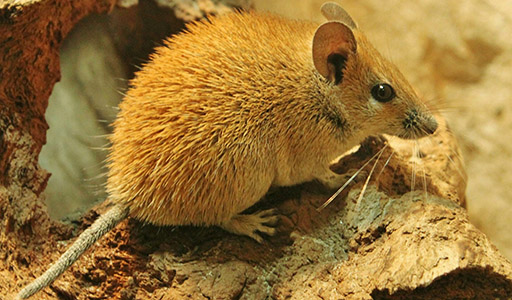Deer Mice

Deer Mouse Information
Deer mice are small mice that live on a diet of primarily insects, seeds, nuts, and berries. These tiny creatures often nest in covered outdoor areas. However, during the cold winter months, deer mice may enter into your home, garage, or shed in search of shelter. They are even known to build nests in abandoned boxes in your basement or attic. In very little time, deer mice can take over your belongings and these places. They pose a threat in the form of transmitting potentially fatal diseases like Hantavirus Pulmonary Syndrome.

What does a Deer Mouse look like?
The pests are characterized by their two-tone fur and tails. Their coats are often gray or brown on top, while their underbellies are white. The same goes for their tails, which have a noticeable separation between the two shades. Commonly, their tails are equal to or longer than the entire length of their bodies.

What does a Deer Mouse eat?
These rodents primarily feed on seeds, fruits, and insects. When sources are limited, deer mice will also eat fungi and carrion. The pests store food in bulk within tree cavities and underground holes.

Deer Mouse habits
The deer mouse is found throughout most of North America, occupying forests, fields, and farmlands. Since they typically nest in holes below ground or under leaf litter and debris, the pests aren’t often abundant in busy city settings. However, cold weather and the fear of predators drive deer mice into residential areas, where they enter homes, sheds, and other buildings.
Frequently Asked Questions
Finding rodent feces on floors or in pantries is a sign that the pests have made their way into the home. Deer mouse droppings are about one-fourth inch long with pointed ends. They often appear along routes between nests and food sources.
Although deer mouse and house mouse scat look similar, identifying the problem pest is vital. When dealing with deer mouse vs. house mouse droppings, residents must be especially careful. Both pests can carry diseases, but deer mouse droppings may transmit hantavirus to people. House mouse waste typically does not.
There are a few noticeable differences in deer mouse vs house mouse appearance.
Deer Mice
- Large eyes and ears
- Furry tail with a white underside
- White belly and feet
House Mice
- Small eyes and ears
- Hairless, scaly tail
- Light brown to black in color with an off-white belly
In addition, smell can be useful in telling the two apart. An unpleasant, musky odor indoors can point to a house mouse infestation, while deer mice don’t have the same strong scent.


